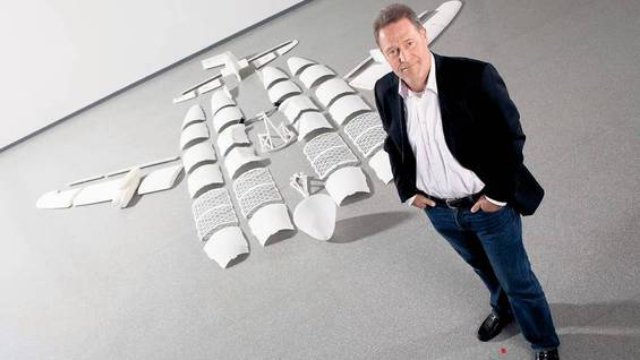 When it comes to nurturing and promoting advancements in 3D printing technology, very few companies have taken the initiative that the European airline manufacturer Airbus has. The aerospace manufacturer started fully immersing itself into the world of additive manufacturing back around 2014, when they equipped their A350 airliner with a titanium 3D printed cabin bracket, and also utilized the first 3D printed spare part on an aircraft being used by Air Transnat.Since then, 3D printing developments and innovations have come rapidly apace from Airbus. Their A350 XWB aircraft is now comprised of over 1,000 3D printed parts, while German RepRap printers have helped to develop more effective camera mounts and windshield wiper systems for their helicopters.Just about a week ago, Airbus filed a patent for a 3D printing process that would be capable of 3D printing an entire sturdy and functional airplane, hinting at a future where airliners will lift off straight from the print bed. Although the idea behind this recently filed patent will likely take a fair amount of time to fully develop, it seems that Airbus is already on its way to flying fully 3D printed aircraft. At their manufacturing plant in Hamburg, Germany, Peter Sander, the head of emerging technologies & concepts at Airbus, shared with the press at Innovation Days 2016 that Airbus had designed, built, and tested an entirely 3D printed unmanned aircraft vehicle (UAV).
When it comes to nurturing and promoting advancements in 3D printing technology, very few companies have taken the initiative that the European airline manufacturer Airbus has. The aerospace manufacturer started fully immersing itself into the world of additive manufacturing back around 2014, when they equipped their A350 airliner with a titanium 3D printed cabin bracket, and also utilized the first 3D printed spare part on an aircraft being used by Air Transnat.Since then, 3D printing developments and innovations have come rapidly apace from Airbus. Their A350 XWB aircraft is now comprised of over 1,000 3D printed parts, while German RepRap printers have helped to develop more effective camera mounts and windshield wiper systems for their helicopters.Just about a week ago, Airbus filed a patent for a 3D printing process that would be capable of 3D printing an entire sturdy and functional airplane, hinting at a future where airliners will lift off straight from the print bed. Although the idea behind this recently filed patent will likely take a fair amount of time to fully develop, it seems that Airbus is already on its way to flying fully 3D printed aircraft. At their manufacturing plant in Hamburg, Germany, Peter Sander, the head of emerging technologies & concepts at Airbus, shared with the press at Innovation Days 2016 that Airbus had designed, built, and tested an entirely 3D printed unmanned aircraft vehicle (UAV).
The 3D printed UAV is named Thor, which is an acronym for Test of High-tech Objectives in Reality. According to Sander, the aircraft will serve as a test platform for high risk and aerodynamic investigations, which will be used to further prove the viability of this 3D printed concept UAV. Thor is comprised of around 50 3D printed parts, two electric motors, and a remote control, essentially making the aircraft fully 3D printed. As Airbus continues to test and refine their 3D printed UAV, they are able to reprint and replace parts in a matter of days and weeks as opposed to a conventional manufacturing process, which would take months.
“You can [3D] print this kind of aircraft in four weeks,” Sander reportedly stated in his presentation to the media. “It has low lead times for fast track developments.”
The unmanned aircraft was first tested back in November, taking flight for 40 km from Hamburg to their plant in Stade, Germany. Coming off of the successful testing, Airbus has scheduled 18 test missions for their 3D printed UAV throughout 2016. The entire unmanned aircraft is reported to weigh around 25kg, and has a length and a wingspan that measures out to about four meters each. The initiative is being worked on across the different Airbus company sectors, such as Airbus Defense & Spaceand Airbus Helicopters. The production cost of Thor is estimated at about 20,000 euros, which is quite the bargain for this type of flying testbed.
The 3D print UAV will be exhibited at the ILA Berlin Air Show, which is taking place from June 1-4 at the Berlin ExpoCenter Airport. Thor was named after the most renowned of the Norse gods, one who is generally identified with thunder; it’s a name that fits the innovative and ground-breaking nature of their UAV project. As Airbus continues to test Thor among their other 3D printing-based developments, they’re brewing the perfect storm for the additive manufacturing takeover, which could soon lead to UAVs being manufactured at the speed of lightning. Discuss further in the Airbus 3D Printed UAV forum over at 3DPB.com.
[Source: Engineering News & Der Tagesspiegel / Images: Airbus via Der Tagesspiegel]

